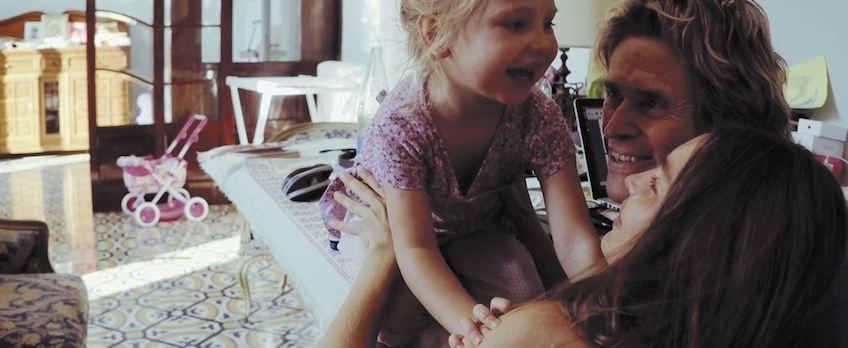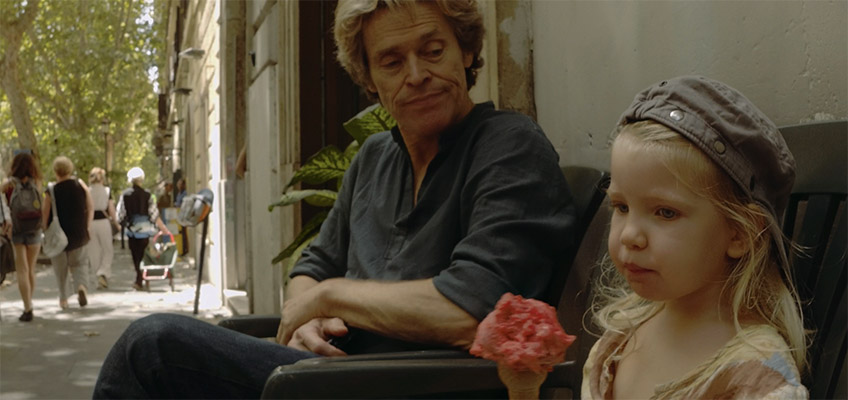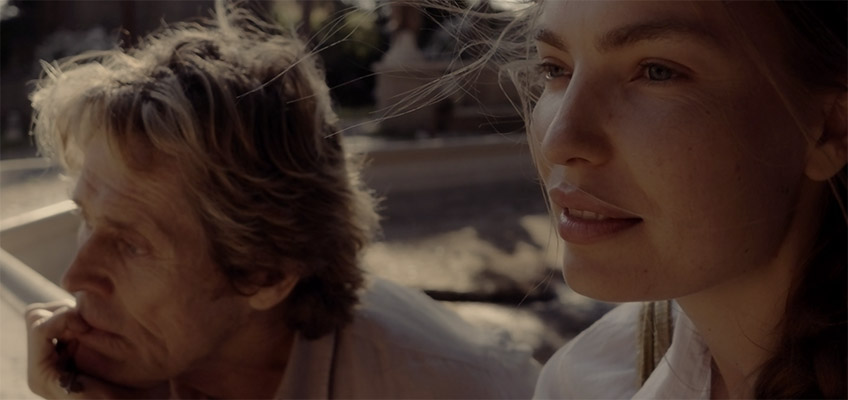Pain and Pleasure: The Complicated Humanity of Abel Ferrara’s Tommaso

Abel Ferrara’s Tommaso begins with a moment of connection. The film’s titular character, a film director imbued with both warmth and volatility by Ferrara regular Willem Dafoe (now five films deep into their collaboration), is seen walking into a nondescript Italian apartment block. The camera pans upwards, basking in the architecture, as if to invite us to dwell on its beauty, its history.
This is where Tommaso takes Italian lessons, and though – per Ferarra’s suggestion – these scenes are presented sans subtitles they are not particularly difficult to understand. Like much of Tommaso, this opening scene is less interested in specifics than it is with gesture. There is a gentle back and forth between Dafoe and his teacher, and we are invited to luxuriate in the sincere, humane textures of this scene: a smile which Tommaso offers the woman as he manages to correctly string together a sentence, or her laughter and appreciation at a small, thoughtful birthday gift which he presents to her at the end of their class.
The scene is suffused with a sense of the joyful curiosity born from learning another language; the awkwardness of translation, the comedy of mispronunciation – all universal missteps in the act of communication. Tommaso is a kaleidoscopic and sensuous self-portrait of the director, interrogating his relationship to his daughter, partner and addictions first. But it is also, from its opening moments, a film about the process of understanding. Tommaso acts as both a confession of guilt and a declaration of survival – a compassionate and self-effacing effort to communicate.

Willem Dafoe and Anna Ferrara in a scene from Tommaso
Told in stream-of-consciousness and built upon ellipses, Tommaso is in many ways more reminiscent of essay than narrative, what narrative there is remaining relatively simple. Tommaso, currently working on a new screenplay, has recently moved to Italy with his partner Nikki and daughter Deedee. A recovering addict, Tommaso continually checks-in with a small AA group, a collective of individuals whomst Ferrara slowly fleshes out throughout the film, narrative threads which he explores but does not insist upon. Ferrara is less interested in these threads as a means of mounting drama than he is in their expansiveness, scenes which help us to understand the breadth of Tommaso’s mundane, everyday existence.
In one memorable encounter, Tommaso offers to walk a friend home from AA. The woman accepts, and as the two walk and talk together, we are given a glimpse into her character, the pair discussing a failed relationship and her coming to terms with the ‘single life’ she now leads. Why this scene is important is not immediately clear; should we suspect a potential relapse? Infidelity? The temptation of infidelity certainly lingers, with multiple dream sequences which involve Dafoe, surrounded by various naked women, scattered throughout. In these moments, the naked female body feels like little more than a prop for the director, representing – in the eyes of both Tommaso and by extension the film – temptation personified.

Willem Dafoe in a scene from Tommaso
Yet in this scene, we soon realise that we are supposed to suspect nothing. The scene exists because it exists, and therein lies its pleasure. It’s through this lackadaisical approach to narrative that we see one of Tommaso’s greatest strengths: its generosity, though paradoxically a generosity that exists in spite of the film’s central character, a man as toxic as the film is compassionate.
Generosity is not the first word that comes to mind when one looks to Ferrara’s dingy and divisive filmography. Tommaso plays at times like an outsider’s riff on Terrence Malick, so enamoured is it with the minutiae of human interaction. Ferrara’s camera, similar to Malick’s, is typified by an elegant and enveloping sense of movement, a curiosity regarding space and physicality which works to further the humane focus of the film’s tangential narrative. There is a keen sense of the body, of the face – specifically Dafoe’s, a human jigsaw of different lines, creases and indentations – and of the nuances of physicality.
It’s a style that the free-wheeling nature of digital cinematography allows for in ways that shooting on film, with its more cumbersome equipment, cannot. This freedom of movement feels new for Ferrara, but it never feels at odds with his past work. The camera’s untethered curiosity, applied to the dark, shadowy corners of an Italian cityscape, feels like an extension of the grungy New York City explored in his earlier genre work.
This looseness feels of a piece with Ferrara’s increasing lack of interest in traditional narrative structure. By paying such little attention to the confines of plot, Ferrara’s tangents become the film’s central text, allowing for his more expressive, experimental asides to feel at one with the film’s predominantly realist palette.

Willem Dafoe in a scene from Tommaso
The intimacy of these asides makes the film feel more personal. Ferrara's own history of addiction is well-documented, scenes in the film’s multiple AA meetings reading as unambiguously autobiographical. Although Dafoe’s speeches to the group act as a conduit for Ferrara to air out many of his most deep-seated insecurities, we also are treated to many long, sensitively drawn close-ups of the surrounding community. These scenes are not merely monologues, but exercises in listening. Dafoe, evoking a slightly more subdued Ferrara in these moments, talks almost reflexively through his hands: brazen confidence punctuated by a distracted and fidgety gaze.
Kindness is another key feature of Dafoe’s performance, evident in the toothy grin and goofy voice he puts on when interacting with his daughter Deedee. It’s a kindness complicated by the relationship of Tommaso and Nikki, which seems to implode over the course of the film. Gestures are made towards Tommaso’s paranoia, his fear of Nikki’s cheating elucidated through the ambiguous, hallucinatory appearances of a young, anonymous suitor whom Tommaso imagines to be entangled with his partner. A detailed, single take sex-scene which is suddenly aborted as their daughter cries out for her mother suggests that the introduction of Deedee into their relationship may play a role in this implosion.
But these threads are presented merely as symptoms, not as the cause. So what is the cause? With Ferrara having cast real life partner Cristina Chiriac as Nikki, and daughter Anna Ferrara as Deedee, one intuits clearly the autobiographical nature of these scenes, possibly more so than Tommaso’s visits to AA. Does this position the film as an exercise in self-flagellation? A long-form apology? Or is Ferrara, with the help of his wife and child, simply exploring the state of his current relationships? The film’s ending, a brazen declaration of self-loathing, seems to single in on perhaps the most potent explanation for the central relationships decay: Tommaso himself.